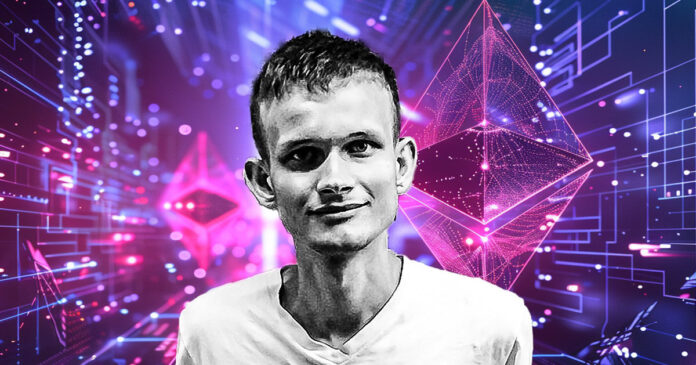
Ethereum founder Vitalik Buterin has added more to the section of the Ethereum roadmap called “The Splurge,” aiming to advance the Ethereum Virtual Machine (EVM) toward a stable, high-performance “endgame state.”
According to the Oct. 29 technical blog post, this vision also included significant improvements in Ethereum’s user experience, security, transaction fee structure, and cryptographic capabilities.
Enhancing EVM with EOF
Buterin explained that the current EVM architecture presents challenges for static analysis, which complicates the creation of efficient implementations, formal code verification, and future extensions. This architecture restricts support for advanced cryptographic methods.
To overcome this, Buterin introduces the EVM Object Format (EOF), a critical part of Ethereum’s upcoming hard fork. EOF is a suite of Ethereum Improvement Proposals (EIPs) that restructures EVM code to separate code from data, restrict dynamic jumps, and introduce new subroutine mechanisms.
These updates are expected to boost EVM efficiency, scalability, and compatibility with complex cryptographic functions.
Legacy contracts will remain functional, but new contracts can leverage EOF-specific features for improved performance and reduced gas costs. With EOF, Ethereum’s network can incorporate upgrades more easily over time.
Account abstraction
Buterin also revealed that “The Splurge” aims to advance account abstraction, broadening the transaction verification process beyond ECDSA signatures. This update would allow accounts to use arbitrary EVM code for verification logic rather than relying solely on single-signature verifications.
According to Buterin, account abstraction allows transactions to originate from smart contracts rather than exclusively from Externally Owned Accounts (EOAs). The complexity lies in implementing this model to support decentralization and mitigate risks like denial-of-service attacks.
Further, he noted that “account abstraction implementations should ideally be harmonized on L1 and L2 as much as possible.”
Transaction fee economics
Buterin also discussed Ethereum’s transaction fee structure, calling it “multidimensional gas.” This concept suggests having distinct prices and limits for different blockchain resources to better allocate the network’s capacity.
As he explained:
“We have multidimensional gas for execution and blobs today; in principle, we could increase this to more dimensions: calldata, state reads/writes, and state size expansion.”
He believes multidimensional gas could reduce the “worst-case” strain on resources, lowering the need for constant performance optimization. However, he noted two main trade-offs: increased protocol complexity and added complexity in the algorithms required to optimize block capacity.
So, to simplify implementation, Buterin proposed that multidimensional gas could be limited to use within EOF. Since EOF prevents contracts from setting gas limits for other contract calls, this approach could sidestep some of the challenges inherent to multidimensional gas.
Mentioned in this article
Credit: Source link






















 Bitcoin
Bitcoin  Ethereum
Ethereum  XRP
XRP  Tether
Tether  Solana
Solana  USDC
USDC  Dogecoin
Dogecoin  Cardano
Cardano  Lido Staked Ether
Lido Staked Ether  TRON
TRON  Wrapped Bitcoin
Wrapped Bitcoin  Wrapped stETH
Wrapped stETH  Chainlink
Chainlink  Avalanche
Avalanche  Sui
Sui  Stellar
Stellar  Litecoin
Litecoin  Shiba Inu
Shiba Inu  Toncoin
Toncoin  Hedera
Hedera  LEO Token
LEO Token  USDS
USDS  Hyperliquid
Hyperliquid  Polkadot
Polkadot  WETH
WETH  MANTRA
MANTRA  Bitcoin Cash
Bitcoin Cash  Ethena USDe
Ethena USDe  Bitget Token
Bitget Token  Wrapped eETH
Wrapped eETH  Uniswap
Uniswap  Monero
Monero  NEAR Protocol
NEAR Protocol  Pepe
Pepe  WhiteBIT Coin
WhiteBIT Coin  Aave
Aave  Ondo
Ondo  Bittensor
Bittensor  Aptos
Aptos  Internet Computer
Internet Computer  Dai
Dai  Official Trump
Official Trump  Ethereum Classic
Ethereum Classic  Tokenize Xchange
Tokenize Xchange  Mantle
Mantle  OKB
OKB  Gate
Gate  sUSDS
sUSDS  Coinbase Wrapped BTC
Coinbase Wrapped BTC 
